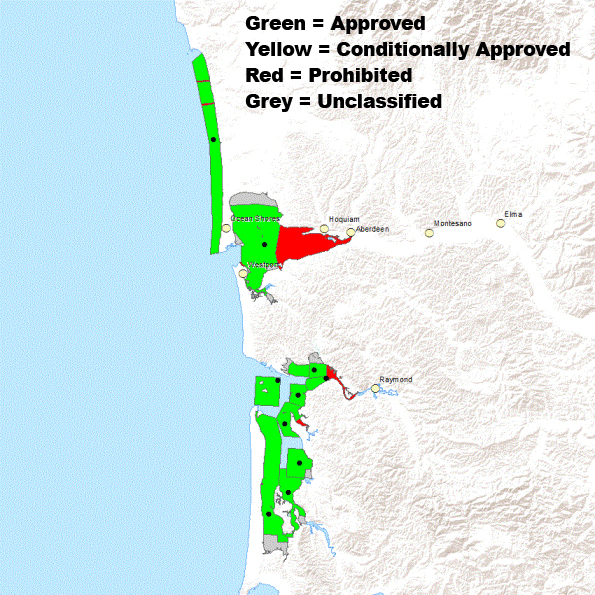Local shellfish areas at risk of fecal bacteria
The Department of Health has closed part of Vaughn Bay in Pierce County for all shellfish harvesting due to high levels of fecal bacteria. Officials also identified 14 more shellfish growing areas that could be closed in the future if fecal pollution continues to get worse. This includes a portion of Grays Harbor and Pacific County.
“The good news is that the pollution problems in almost all these areas can be found and fixed,” said Bob Woolrich, Growing Area section manager. “There have been many successful pollution correction projects using partnerships with local and state agencies, Tribes, and others.”
The agency shellfish program evaluates the shellfish growing areas every year to see if water quality is approaching unsafe limits. If so, areas are listed as “threatened” with closure.
Shellfish harvesting areas threatened with closure include:
Grays Harbor County – Grays Harbor
Pacific County – Bay Center and near the mouths of the Naselle and Nemah rivers
Jefferson County – Hood Canal near Dosewallips State Park
King County – Poverty Bay; Kitsap County – Port Orchard Passage
Mason County – Hood Canal near Alderbrook and Pickering Passage (McLane Cove)
Pierce County – Penrose Point and Rocky Bay
Snohomish County – Port Susan; Thurston County – Henderson Inlet
Whatcom County – Portage Bay.
Being designated as “threatened” can serve as an early warning to help focus pollution correction work that can help avoid closures. Pollution investigation and efforts to fix the problems are underway in several threatened areas and will begin soon in others.
The agency has invested more than $6 million over the past three years in pollution reduction projects. The money comes from federal National Estuary Program funds aimed to support local governments to begin pollution identification and correction programs in shellfish harvesting areas. These programs are a proven way to open shellfish beds that have been closed. Fecal bacteria come from animal and human waste, and may contaminate shellfish and make people who eat them sick.
A map of the 2014 threatened areas is available on the Department of Health website.

